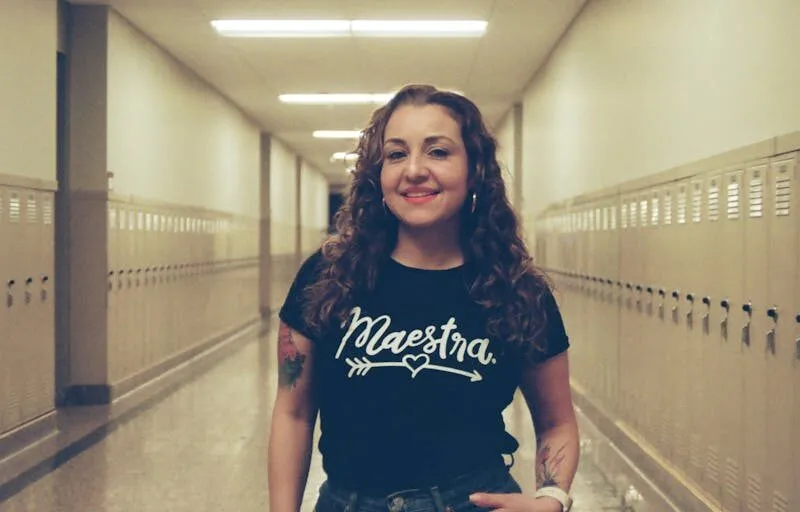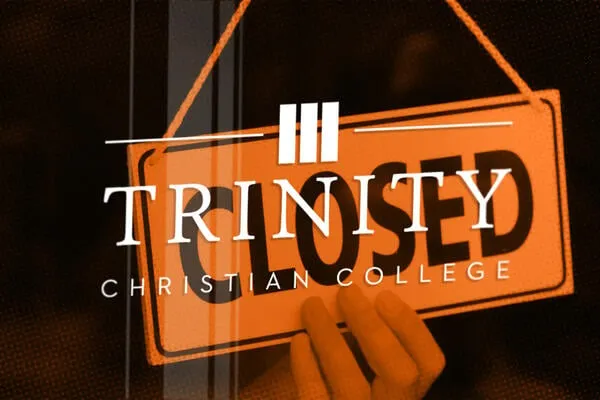There was a moment in the mid-2010s when Montessori was inescapable. The century-old education philosophy, which prioritizes independence from a young age, had turned into a lifestyle brand. Blocks and other wooden activity sets were remarketed as “Montessori toys.” Parents flocked toward outdoor learning, which often involved livestock on a farm, sometimes dubbed “Montessori farms.”
“I think Montessori has been around for a very long time, and there have been all kinds of waxes and wanes, with generations discovering Montessori again and again for very different ideas,” Mira Debs, director of education studies at Yale University, says. “As someone who studied Montessori over a long historical period, what I find so fascinating is the way it keeps being transformed by new audiences and people for whatever they are seeking for their children.”
But over the last five years — and in the last year particularly — the education landscape has changed dramatically. With a dipping economy, a fight about school voucher options and confusion about what the “Montessori” term even means, is Montessori still the “it” trend in the preschool world?
The questions arise as one prominent chain of Montessori-inspired schools shrinks rapidly.
A Century-Long Rise and Fall — and Rise Again
Angeline Lillard became aware of the Montessori method when she was 3 years old, attending a Montessori school alongside her sister when its resurgence hit in the 1960s during a cultural shift toward individual autonomy. Lillard grew up to become a scholar who has spent two decades studying Montessori schools and authored “Montessori: The Science Behind the Genius.”
Interest in the philosophy, first created by Italian doctor and educator Maria Montessori in the early 1900s, tends to fall during times of recession and grow during economic upswings, according to Lillard, which could account for its seemingly pervasive presence in the late 2010s.
“Every school dips when the economy isn’t doing well,” she says. “Progressive, child-centered techniques were going strong until World War II. You can see cycles where there’s certain challenges and we’ll retreat to the Depression-era practices.”
While it has been associated with wealthier, typically white families, several Montessori institutions have pushed toward helping lower-income children, too. For example, Magnolia Montessori for All made headlines when it opened its first location in 2014 in East Austin, Texas, an area home to lower-income residents.
Lillard also believes the programming most recently experienced a surge in large part due to what she calls the “charter school movement,” where families forgo the traditional public school path and instead choose publicly funded, privately run charter schools based on their families’ needs. Montessori schools that offer only preschool are not necessarily competing with many public institutions. But those that provide elementary or middle school education do vie for students against public K-12 schools.
Today, families can enroll their children at Wildflower Montessori Schools, which claim 60 schools in more than a dozen states. Or at a location of Bezos Academy, which touts itself as “Montessori-inspired” and is sponsored by Amazon founder Jeff Bezos, who attended a Montessori school himself in Albuquerque, New Mexico, as a child.
Perhaps most well known is Guidepost Montessori, which splashed on the scene in 2016 and ballooned to more than 130 locations across the globe.
But late last year, the privately backed chain of schools began rapidly closing locations in Virginia and Ohio, followed by a slew of closures so far in 2025 — five locations in Colorado, three in Ohio and two each in Minnesota and Iowa. Openings already planned for other locations were put on indefinite hold. Other locations remain open, and the chain itself has not declared bankruptcy or announced its folding.
However, company co-founders Ray and Rebecca Girn announced in February they were both stepping down from the company.
“In our eagerness to meet the vast vision of our mission, we overextended ourselves, growing our school network beyond what we could effectively support, both financially and operationally,” a company blog post said, adding the company was in the process of closing one-third of its schools “that have so lovingly been built over the past nine years.”
Guidepost is owned and operated by Higher Ground Education, an education management company focused on Montessori and backed by private venture capital dollars. EdSurge was unable to reach a Guidepost or Higher Ground Education spokesperson for comments after repeated attempts.
Yet some observers believe the chain’s faltering does not signal the end for Montessori programming.
“I have no reason to think Montessori as a philosophy is going out of vogue,” Elliot Haspel, senior fellow at the family policy think tank Capita, says. “There are fads, but Guidepost is a lot less about Montessori and more about a profit-driven chain that made really bad business decisions.”
Lack of Guardrails — and Trademark — Cause Concerns
It is tough to track Montessori program enrollment numbers. Although schools and teachers have the option of earning accreditation from Montessori associations, there is no set definition, or trademark for “Montessori,” so any institution could arguably dub themselves a “Montessori school,” or follow Bezos’ lead and claim to be “Montessori-inspired.”
The ambiguity is similar to cleaning supplies carrying the label “eco-friendly.” It’s not always clear to consumers what that actually means.
Lillard, who studied play and cognition during her Ph.D. program, eventually sent her own children to a Montessori-branded school — but soon noticed a discrepancy. Her children were filling out math worksheets before getting to select their own activities. In true Montessori programs, children are allowed to choose the order in which to complete tasks.
“When I didn’t like something at the school, I would ask my family and they would say, ‘Well that’s not Montessori,’” she says. “That’s a problem — parents have no idea. You know it’s a ‘Montessori school’ but there’s a huge variety, and it’s because the term is not trademarked.”
The American Montessori Society did not reply to EdSurge requests for comment but states on its website there are roughly 5,000 Montessori schools in the U.S., with 4,500 of those private and the remainder public.
Ellen Frede, a recently retired co-director of the National Institute for Early Education Research, says while it’s always been a more niche program, she agrees it has fluctuated in popularity.
“It’s not something I’ve studied, keeping track of what’s happening in Montessori, but being deep in the field I would agree it’s an ebb and flow,” she says. “It’s always been there. It’s something you’re aware of — there are Montessori programs around you, you know someone whose kids are going to one — but there are not these big programs.”
Any current potential dip in Montessori enrollment could be in part due to the fact there are fewer children in the world in general right now, Frede says, coupled with fewer children enrolled in early childhood education programs across many states in the U.S.
Ironically, the lack of guardrails that helped spread the Montessori philosophy far and wide in more mainstream schools could actually undermine true Montessori programs. Child-size furniture, for example, is a staple in Montessori classrooms that is now ubiquitous in preschool classrooms across the U.S. It has also largely been adopted in homeschool techniques, another education avenue that has been on the rise.
And for many families, choosing Montessori — or not — simply comes down to what is most accessible. After all, the most common child care arrangement in the U.S. is leaning on family, friends and neighbors for support.
“In a lot of cases, because of the scarcity that marks the U.S. child care system, parents are making choices on what is around and available,” Haspel says. “I’m certain there is a cadre of parents that are looking at Montessori because they deeply believe in it, but I also believe if there’s Montessori down the street they’re going for it — and similarly if it’s not down the street, they will go for a different kind of program. I don’t think it has revealed preferences so much as choosing any child care and early education slot that will work for their family.”
Caught in the Crossfire of Voucher Programs
Meanwhile, Montessori schools may face an existential threat from today’s political battles over education.
Debs, at Yale University, says charter schools have been caught in the crossfire of the push toward voucher programs, which take state funds and give them to families attending private or religious institutions.
“Both sides have veered away from charter schools right now; Republicans are supporting vouchers and the privatization of education and in the face of that, a lot of Democrats are turning back toward traditional schools,” Debs says. “Which have led to charter schools being abandoned. Montessori and the lack of funding for charter network expansion is kind of on pause right now.”
She said some school districts, like those in Detroit or Grand Rapids, Michigan, have been opening their own Montessori public schools in an attempt to woo back families that have gone to charter schools.
But with state-funded pre-K on the rise in many states, Montessori could be getting left behind. Frede pointed toward state-funded programs needing their own certification. Montessori has its own teaching methods and is largely run by independent owners, meaning those owners would have to apply for state certification on their own volition.
“So it’s a double whammy,” she says. “This is a whole movement, and it’s hard for Montessori to fit its square peg into the round hole of state-funded pre-K. Typically they know what their program is and aren’t as open to modifying it to fit the situation. And I do think it harms them sometimes.”
There’s also the potential impact of the declining economy. Most private schools, including Montessori programs, are backed by private donations, and with an ever-weakening economy, those could become sparse.
“There have been more limited donors supporting the Montessori model versus other types of high-intensity programs,” Debs says, specifically pointing to KIPP, a nationwide public charter school chain focused on preparing students for college.
“But I think it’s really hard to say in terms of any trends with Montessori demand if the cooling off is more so influenced by the economic sector or in terms of creation of new public schools,” she says. “And I think that has less to do with the parental demand for Montessori.”


